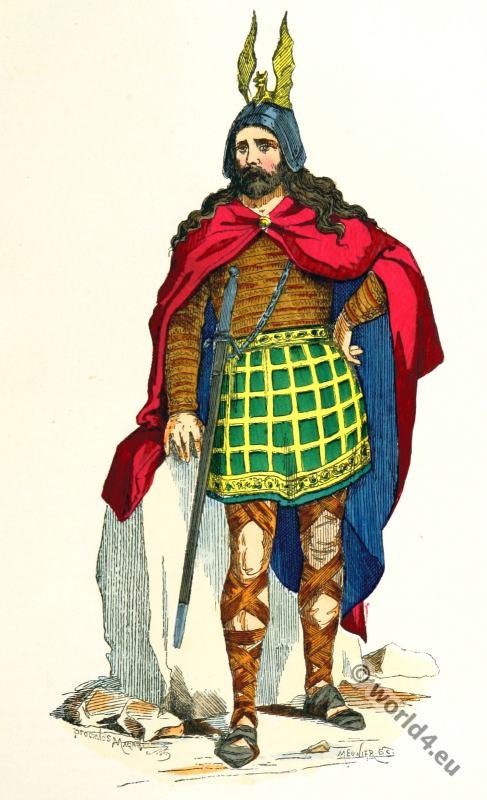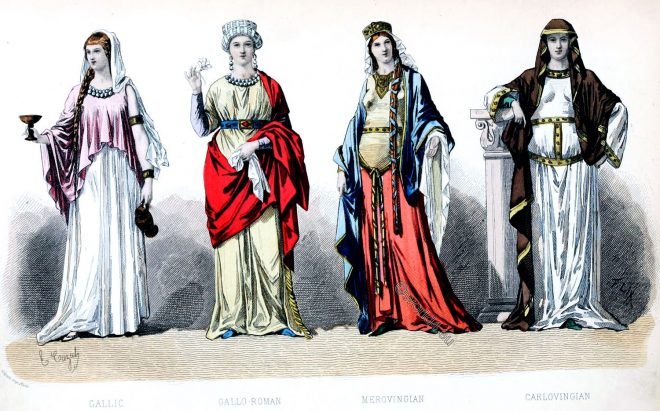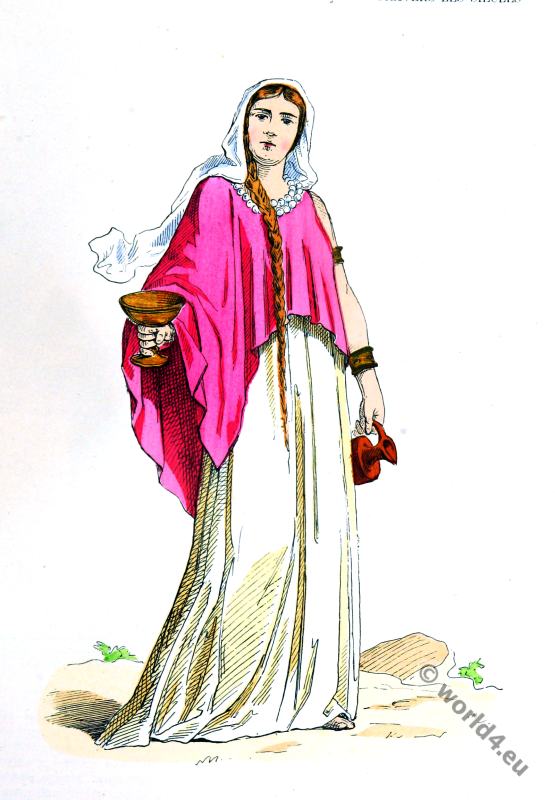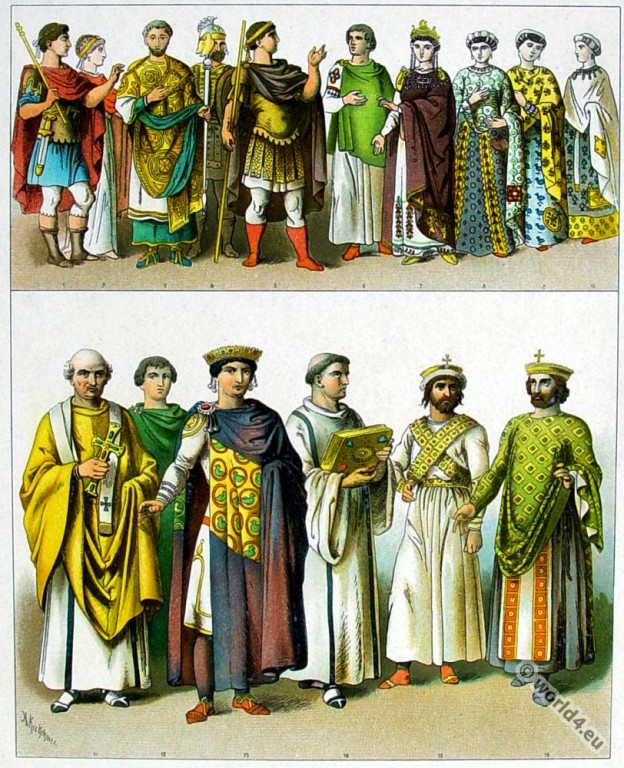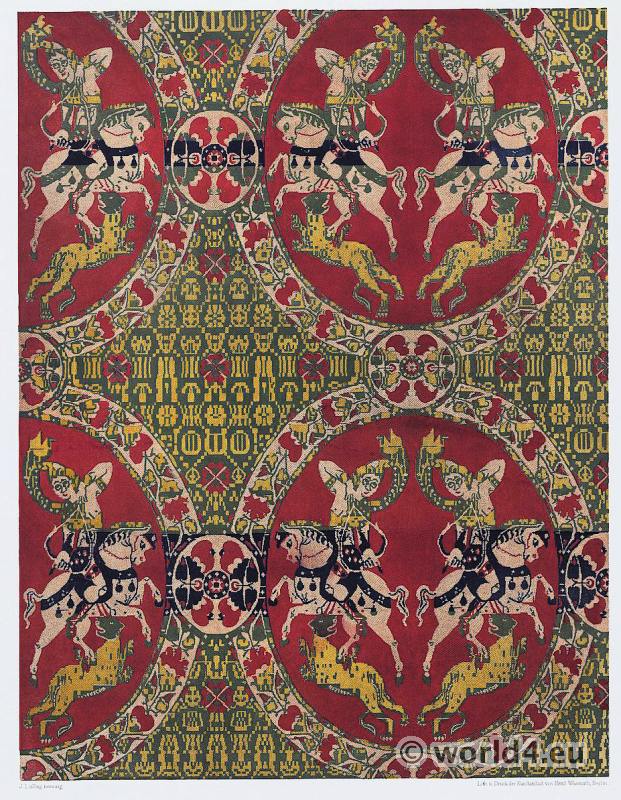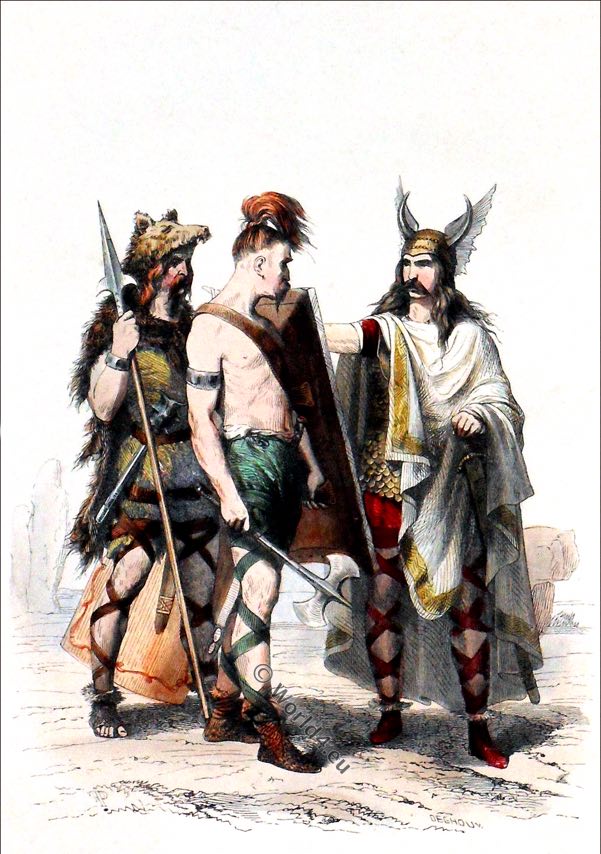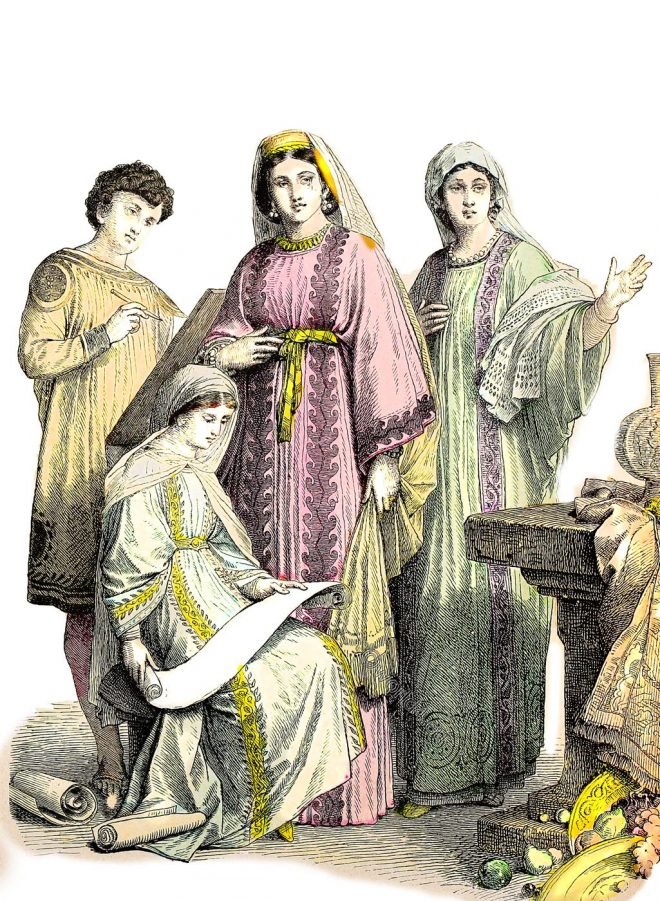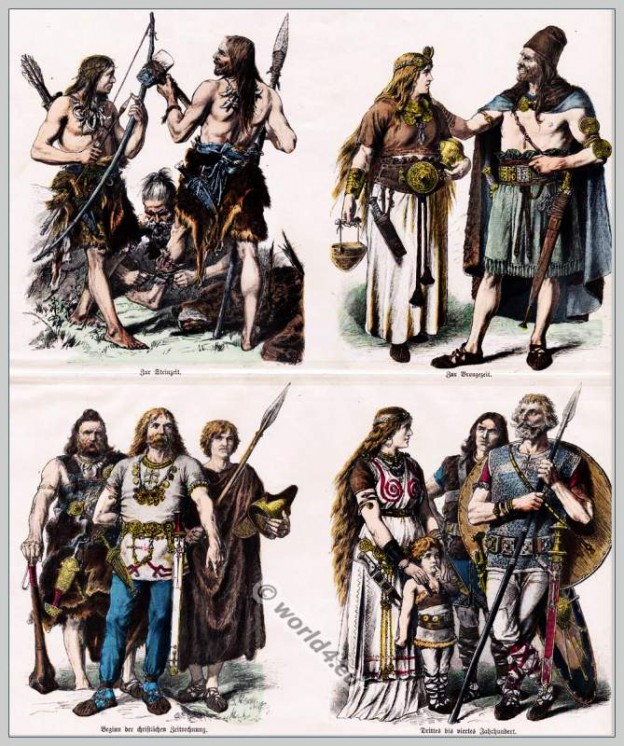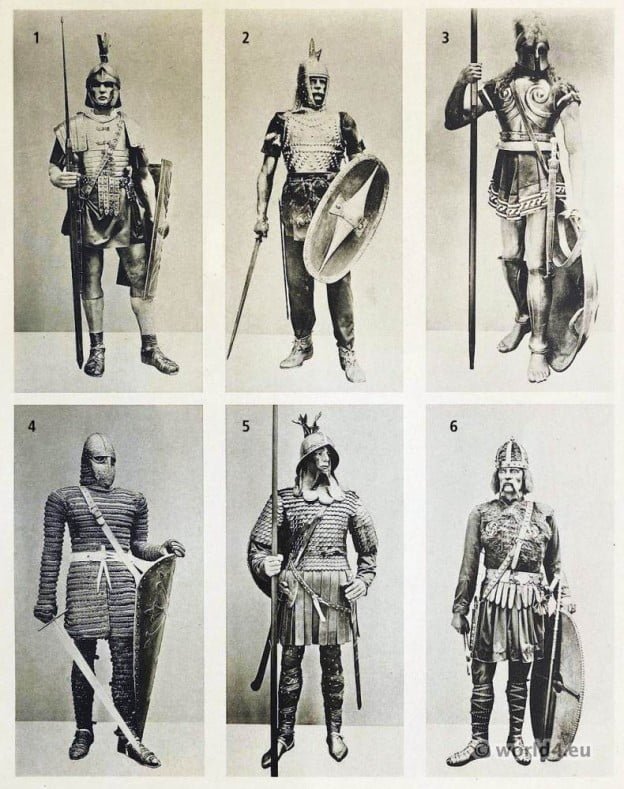Gallic chieftain under the Roman domination. 2nd to 3rd century.
Category: 4th Century
The Gallic and Gallo-Roman costume period.
Gallic period—Woad, or the pastel — Tunics and boulgètes — “Mavors” and “Palla” — Cleanliness of the Gallic women — The froth of beer or kourou — The women of Marseilles; their marriage-portions — Gallo-Roman period — The Roman garment — The stola — Refinement of elegance — Extravagant luxury of women — Artificial aids — A vestiaire or wardrobe-room of the period — Shoes — Jewels and ornaments — The amber and crystal ball — Influence of the barbarians.
Young Gallic Woman 5th to 7th century
Young Gallic Woman 5th to 7th century.
Byzantine empire costumes, 300-700 A.D.
Theodosius I also known as Theodosius the Great, Justinian I, Theodora, Byzantine empress a.o.
Byzantine silk fabric. The mantle of St. Fridolin. 4th to 8th century.
The pattern shows a transformation of a Sassanid pattern of VI-VII. Century. The fabric itself belongs to the Byzantine period of the VII.-VIII. Century.
Frankish Merovingian costume history 4th and 5th century.
The Nobility. State Costume — Men 6th, 7th and 8th Centuries. Goldsmiths’ Work. Costume of the Middle Classes Men. Lower Classes. The Glove. Costume of the Nobility Women. Jewellery of the Franks.
Clothing of the early Christians and Arabians of the Middle east.
Clothing of the early Christians and Arabs in the Middle East from the 4th to the 6th century.
Teutons clothing. From the Stone Age to the 4th century.
Teutonic costume prehistoric period, third and fourth centuries A.D.
Ancient warriors. Life-size figures in full armor.
Ancient warriors. Life-size figures in full armor and equipment. Carl Gimbel Collection.

